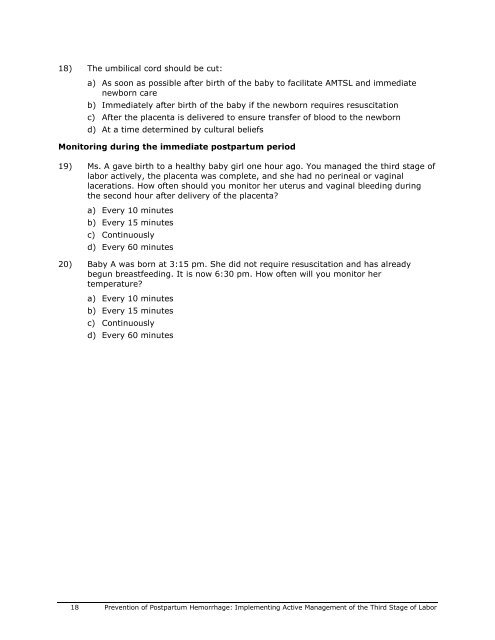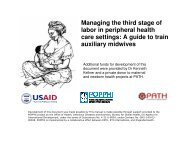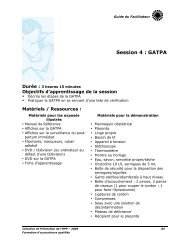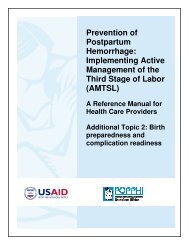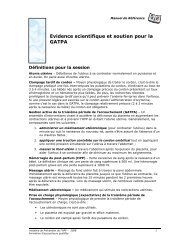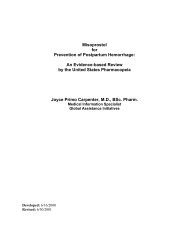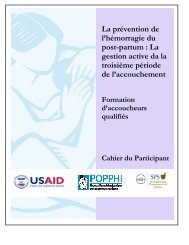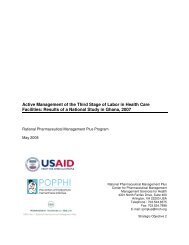Prevention of Postpartum Hemorrhage: Implementing ... - POPPHI
Prevention of Postpartum Hemorrhage: Implementing ... - POPPHI
Prevention of Postpartum Hemorrhage: Implementing ... - POPPHI
You also want an ePaper? Increase the reach of your titles
YUMPU automatically turns print PDFs into web optimized ePapers that Google loves.
18) The umbilical cord should be cut:a) As soon as possible after birth <strong>of</strong> the baby to facilitate AMTSL and immediatenewborn careb) Immediately after birth <strong>of</strong> the baby if the newborn requires resuscitationc) After the placenta is delivered to ensure transfer <strong>of</strong> blood to the newbornd) At a time determined by cultural beliefsMonitoring during the immediate postpartum period19) Ms. A gave birth to a healthy baby girl one hour ago. You managed the third stage <strong>of</strong>labor actively, the placenta was complete, and she had no perineal or vaginallacerations. How <strong>of</strong>ten should you monitor her uterus and vaginal bleeding duringthe second hour after delivery <strong>of</strong> the placenta?a) Every 10 minutesb) Every 15 minutesc) Continuouslyd) Every 60 minutes20) Baby A was born at 3:15 pm. She did not require resuscitation and has alreadybegun breastfeeding. It is now 6:30 pm. How <strong>of</strong>ten will you monitor hertemperature?a) Every 10 minutesb) Every 15 minutesc) Continuouslyd) Every 60 minutes18 <strong>Prevention</strong> <strong>of</strong> <strong>Postpartum</strong> <strong>Hemorrhage</strong>: <strong>Implementing</strong> Active Management <strong>of</strong> the Third Stage <strong>of</strong> Labor


